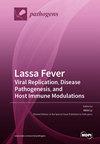Evaluation of 16S-Based Metagenomic NGS as Diagnostic Tool in Different Types of Culture-Negative Infections
IF 3.3
3区 医学
Q2 MICROBIOLOGY
引用次数: 0
Abstract
Bacterial infections pose significant global health challenges, often underestimated due to difficulties in accurate diagnosis, especially when culture-based diagnostics fail. This study assesses the effectiveness of 16S-based metagenomic next generation sequencing (NGS) for identifying pathogens in culture-negative clinical samples across various medical settings. Overall, 48% of samples were collected from orthopedics, 15% from neurosurgery, and 12% in cardiac surgery, among others. The detection rate of monomicrobial infections was 68.6%, and 5.7% for polymicrobial infections. In addition, NGS detected bacteria in all samples from the lungs, head and neck, and eye specimens. Cutibacterium acnes (11%, 12/105) was the most frequent microorganism, followed by Staphylococcus epidermidis (10.4%, 11/105), and Staphylococcus aureus (9.5%, 10/105). In conclusion, 16S-targeted metagenomic sequencing enhances pathogen detection capabilities, particularly in instances where traditional cultures fail. By the combination of NGS and bacterial cultures, microbiologists might provide a more accurate diagnosis, guiding more effective treatments and potentially reducing healthcare costs associated with empirical treatments.将基于 16S 的元基因组 NGS 作为不同类型培养阴性感染的诊断工具的评估
细菌感染是全球健康面临的重大挑战,由于难以准确诊断,尤其是在培养诊断失败的情况下,细菌感染往往被低估。本研究评估了基于 16S 的元基因组下一代测序(NGS)在不同医疗环境中鉴定培养阴性临床样本中病原体的有效性。总体而言,采集的样本中有 48% 来自骨科,15% 来自神经外科,12% 来自心脏外科等。单微生物感染的检出率为 68.6%,多微生物感染的检出率为 5.7%。此外,NGS 在肺部、头颈部和眼部标本的所有样本中都检测到了细菌。痤疮杆菌(11%,12/105)是最常见的微生物,其次是表皮葡萄球菌(10.4%,11/105)和金黄色葡萄球菌(9.5%,10/105)。总之,16S 靶向元基因组测序提高了病原体检测能力,尤其是在传统培养失败的情况下。通过 NGS 与细菌培养的结合,微生物学家可以提供更准确的诊断,指导更有效的治疗,并有可能降低与经验性治疗相关的医疗成本。
本文章由计算机程序翻译,如有差异,请以英文原文为准。
求助全文
约1分钟内获得全文
求助全文
来源期刊

Pathogens
Medicine-Immunology and Allergy
CiteScore
6.40
自引率
8.10%
发文量
1285
审稿时长
17.75 days
期刊介绍:
Pathogens (ISSN 2076-0817) publishes reviews, regular research papers and short notes on all aspects of pathogens and pathogen-host interactions. There is no restriction on the length of the papers. Our aim is to encourage scientists to publish their experimental and theoretical research in as much detail as possible. Full experimental and/or methodical details must be provided for research articles.
文献相关原料
| 公司名称 | 产品信息 | 采购帮参考价格 |
|---|
 求助内容:
求助内容: 应助结果提醒方式:
应助结果提醒方式:


